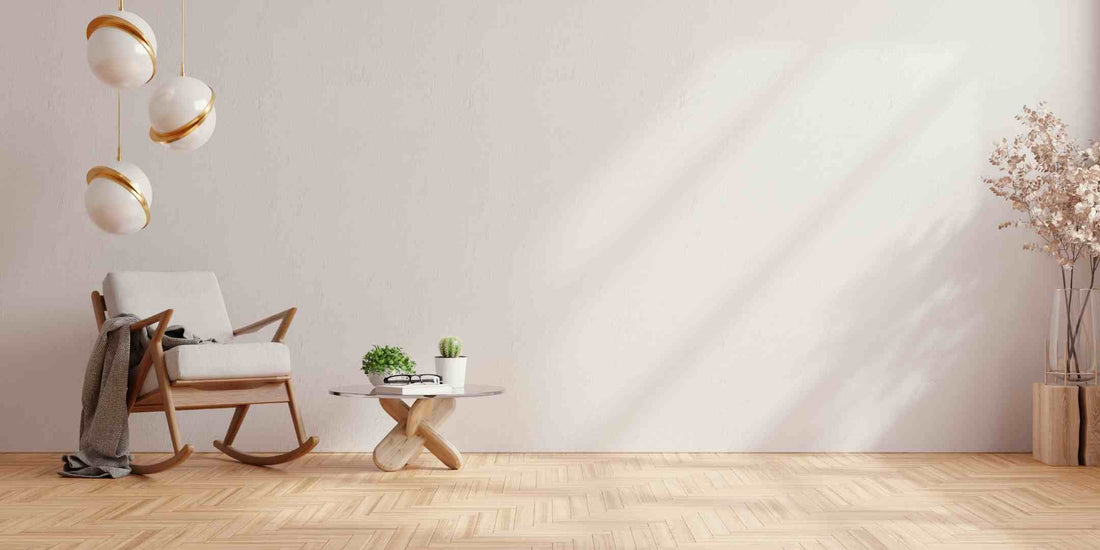
Best Neutral Paint Colors That's Timeless
Share
When designing a timeless, cozy, and effortless home, the best neutral paint colors always rise to the top of the list. They’re the dependable jeans of the interior design world. You can dress them up, tone them down, and they’ll never judge you when you want to try something bold. Their versatility empowers you to be creative and experiment with different styles and decor.
Let’s unravel the most popular neutral paint color, explore the three primary neutral colors, and offer practical guidance on picking the right paint color for your home.
Why Neutral Paint Colors Never Fail

Here’s the truth: design trends are like the tide. They come and go. One season, jewel tones dominate Instagram; the next, moody charcoals are everywhere. But neutrals? They set the stage for everything else.
Neutral wall paint works because it creates a sense of balance. You can bring in texture, color, and personality through furniture, rugs, art, and plants without worrying about clashing. That’s why the best neutral paint colors for whole-house schemes are so popular.
What Are the Three Main Neutral Colors?
If you ask a seasoned painter or contractor, they’ll say the three primary neutral colors are:
- White – The clean, classic, and oh-so-chic backdrop instantly opens up a space.
- Gray – The cool cousin that works well in modern, transitional, or industrial-inspired interiors.
- Beige – The warm, inviting tone that homeowners consistently return to when they seek coziness without heaviness.
Of course, designers also love the “greige” family (a magical mix of gray and beige) because it brings out the best of both worlds.
What Is the Most Popular Neutral Paint Color?
If you polled a group of homeowners, contractors, and DIYers, you’d hear the same names repeatedly. The most popular neutral paint color in recent years has been Sherwin-Williams Agreeable Gray. Why? Because it’s neither too warm nor too cool. It’s that perfect middle ground.
Other runner-ups include:
- Benjamin Moore Revere Pewter – The greige has dominated Pinterest boards for years.

- Sherwin-Williams Alabaster – A creamy white that warms up a space without feeling yellow.

- Behr Swiss Coffee – A classic white with just enough depth to avoid looking stark.

These shades aren’t just “popular”. They’re beloved because they work across lighting conditions, architectural styles, and furniture palettes.
How to Pick the Right Neutral Paint Color
Here’s where the fun (and occasional frustration) comes in. Choosing the right neutral paint color isn’t as easy as pointing to a swatch and saying, “That’s the one.” Paint colors behave like chameleons, shifting under natural sunlight, LED bulbs, and even the furniture around them.
Here are a few insider tips:
Test on the Wall, Not the Swatch
Tape up at least 2x2 ft. of paint samples and examine them in daylight, evening, and artificial light. This thorough testing will ensure you're well-informed and prepared, as the same beige can look gray in the morning and peachy at night.
Choose The Correct Colors For Undertones
Sometimes, “neutral” isn’t really neutral. Whites might lean blue (cool) or yellow (warm). Grays might carry purple or green undertones. Beige can look pink or golden.
This shows that undertones matter more than you think when choosing the right neutral paint color.
Consider the Flooring
Got honey oak floors? A cooler neutral balances out the warmth. Got concrete or slate floors? Warmer neutrals will soften the vibe.
Play with Finish
For walls, matte or eggshell works best. If you’re painting trim, semi-gloss adds just enough sheen to make it stand against flat walls.
What Wall Color Goes with Everything?
Designers are often asked: “What wall color goes with everything?” And the short answer is white. A balanced white will never fight with furniture, rugs, or art.
But do you know what the honest answer is? It depends on what “everything” means in your home.
What do we mean by this?
A crisp white, like Benjamin Moore's Chantilly Lace, is unbeatable if you prefer a modern or Scandinavian style. If you’re leaning toward a cozy farmhouse, a warmer white, such as Sherwin-Williams Alabaster, pairs beautifully with wood accents.
For homeowners who love flexibility, greige shades like Agreeable Gray or Edgecomb Gray are versatile and go with everything. It can perfectly blend with navy sofas and terracotta rugs.
Should I Paint All Walls in a Room the Same Color?
This is one of those classic homeowner debates. Interior designers often say, " Yes, you should paint all the walls in a room the same color—at least for most rooms." Why? Because it creates flow and makes the space feel larger.
But if you crave drama, an accent wall can add personality without overwhelming the entire space. Contractors often recommend using a neutral base color and adding depth with a slightly darker tone of the same family for the accent.
Pro tip: In open-concept spaces, large, multi-functional areas that combine two or more rooms, stick with one neutral across the main living areas. It ties the rooms together and avoids that patchwork look.
Best Neutral Paint Colors for Whole House
If you’re building, renovating, or simply tired of clashing colors from room to room, a whole-house palette of the best neutral paint colors is the way to go.
Here are a few tried-and-true options that contractors, designers, and DIYers swear by:
- Sherwin-Williams Agreeable Gray – Safe, timeless, and elegant.
- Benjamin Moore Edgecomb Gray – Warm but versatile.
- Sherwin-Williams Pure White – A crisp white that’s not too stark.
- Behr Silver Drop – Soft gray with a hint of warmth.
- Benjamin Moore Classic Gray – Subtle, sophisticated, and never overpowering.
These shades are suitable for use in living rooms, bedrooms, kitchens, and bathrooms.
Bonus: they make your home look cohesive, which is a big yes if you ever decide to sell. It can increase the value of your whole place.
Expert Insights: Why Designers Love Neutrals
Interior designers often say neutrals give homeowners breathing room. When everything is bold, the eye has nowhere to rest. Neutral walls act like a pause button in the chaos of modern living.
Contractors love them, too, because they save time and headaches. There are fewer touch-ups, fewer complaints, and less risk that homeowners will regret the color once the furniture is in place.
DIYers? They love neutrals because they’re foolproof. You can switch up your decor seasonally without worrying that your pumpkin-orange throw pillows will clash with your lime-green walls.
Real-Life Experiences
Here’s the funny part: every designer has a horror story about painting. Ask around and you’ll hear about the “perfect beige” that turned neon peach or the “soft white” that glowed purple under LED lights.
One contractor swears by testing samples in the bathroom because small spaces with harsh lighting reveal undertones faster than anywhere else. Another DIYer admitted to painting the whole living room greige, only to repaint it white a month later because it looked like wet cement.
The takeaway? Even the best neutral paint colors need testing. Don’t skip the swatch step—it’s the difference between loving your walls and eyeing them with regret every morning.
Pro Designer Hacks for Using Neutral Paints
- Layer Textures – Neutral walls shine when paired with texture. Think woven rugs, linen curtains, or a rustic wooden coffee table.
- Contrast with Trim – White walls with slightly darker trim (like a soft gray) feel chic without being showy.
- Add Pops of Color – A neutral backdrop makes artwork, furniture, and accessories pop even more.
- Consider Ceiling Color – A slightly lighter version of your wall paint on the ceiling can make the room feel taller.

Neutrals Are Forever
Trends come and go, but the best neutral paint colors remain timeless. Whether you’re a homeowner planning a remodel, a contractor juggling multiple projects, or a DIYer tackling your first paint job, neutrals will always have your back.
So, should you paint your whole house in a single neutral shade? Probably. Should you add an accent wall if you’re feeling bold? Go for it. Should you stress over undertones? Only a little.
At the end of the day, your home should feel like you. And nothing creates a more adaptable, welcoming canvas than a well-chosen neutral.
